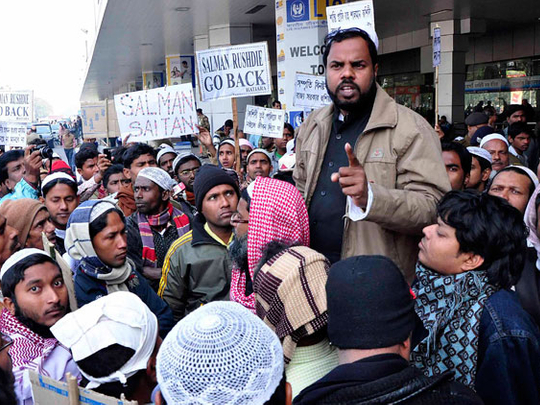
The ongoing culture wars in India put the spotlight on that old chestnut — liberty versus democracy. Many may have trouble seeing any tension between the two and think of them as being interwoven and mutually reinforcing. In reality, there is an adversarial relationship and the two don’t necessarily always march together.
It is far easier to get a handle on democracy than on liberty — electoral politics is frequently equated with democracy and it is falsely assumed that as long as elections are held routinely, all is well on the democracy front. But when it comes to liberty, very few of us have a clear understanding of what it means. It is abstract and we do not normally encounter it in person unless of course we happen to be a celebrated author like Salman Rushdie or an eminent sociologist like Ashis Nandy or for that matter a filmmaker like Kamal Hasaan.
This debate takes on a special meaning in India largely because its democracy is very much a work-in-progress — the country is fashioning a western construct to suit its peculiarly diverse society. In this ongoing evolution, many forget that historically, liberty and advancement of rights and freedoms preceded democracy — from Magna Carta to adult suffrage, it took more than 800 years, whereas in India, they both came together simultaneously and this created some uniquely Indian distortions to what the West would normally label as liberal democracy.
In recent times, the Rushdie affair — the fatwa against him and banning of his book The Satanic Verses — is frequently cited as the point of inflection in this matter of liberty and free expression. What are the limits of tolerance in a liberal society and is artistic licence unfettered? Aren’t communitarian sensitivities about representations of culture, religion, histories and identities as sacred as the foundational values of liberty?
The obvious answer would be that a middle ground has to be found to fulfil both ends of this spectrum. Not so, says Rushdie, who makes a very forceful case to say freedom cannot be circumscribed or hemmed in by conditions — it is absolute. He presents it as a binary choice: You are either for or against freedom. Familiar George W. Bush-speak!
The underlying argument behind this line of reasoning is that books have to be fought with books not guns. Heresy needs to be countered by reasoned argument, not bullets or assassins or fatwas. One may vehemently disagree with Rushdie, but he certainly forces a relook on this vexed issue — for, if the fear of offending someone is to be forever factored in, then all conversations will be reduced to sterile debates and art will lose much of its vitality and creativity as well as its ability to upend orthodoxy and counter falsehoods.
This tenet of giving free rein to an individual is rooted in a strong western liberal tradition, but how well does it sit on eastern values — particularly in India, where the diversities are bewildering and much of the country’s narratives are shackled to history. The liberty-versus-democracy debate becomes edgier and complex as majoritarian and minoritarian interests muddy the waters and intellectual discourses become prey to vote-bank politics. A far cry indeed from what Rushdie feels — freedom is indivisible.
Many Indians assume that since their country is often called the largest democracy in the world, all is well and preen themselves on the rights and freedoms which lesser mortals in Asia and other developing countries do not enjoy. Blissfully unaware that mission creep is setting in on these freedoms — whether it is the case of the all-girl rock band in Kashmir or paintings depicting Hindu deities — as a steady and relentless erosion of liberty is underway and the fringe rules the roost.
Which brings to the fore, the celebrated columnist and editor Fareed Zakaria’s tag of illiberal democracies. He says too much democracy can sometimes be bad and we can have the tyranny of majoritarian and minoritarian rule. Democracy flourishes at the expense of liberty and ironically, by restricting democracy, we enhance our freedom. A mass plebiscite, for example, to judge art and culture will be disastrous. Yet, this is double-speak for if we were to declare India an illiberal democracy what would be Rushdie’s take on the ban on any public debate in the West that questions the Holocaust? Even liberal democracies, it appears, have their taboos.
However one wants to label India’s democratic credentials, there are major aberrations from the traditions and practices followed in the West. The Indian model is a product of mass movements and agitational politics, whereas constitutional liberalism — liberties of speech, assembly, religion and property — was the springboard for democracy in the West, where one has led to the other and consequently individual rights are zealously guarded.
India lacks this legacy and ignores the dangers of letting democracy derail liberty. Civil society has to be the vanguard to protect liberty, much as it is for fighting corruption. The future of freedom is at stake and defending Nandy, however incomprehensible his utterances may be, is as important as the legislation for the ombudsman.
Ravi Menon is a Dubai-based writer working on a series of essays on India and on a public service initiative called ‘India Talks’.








